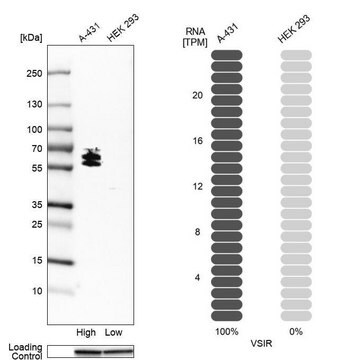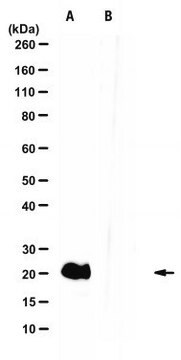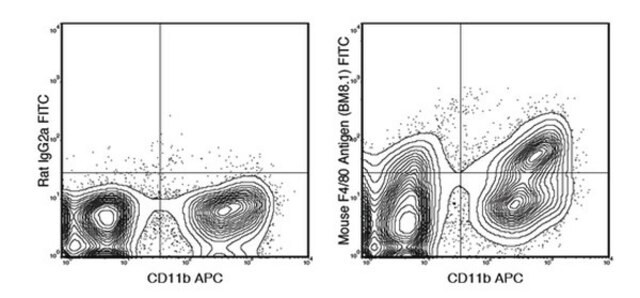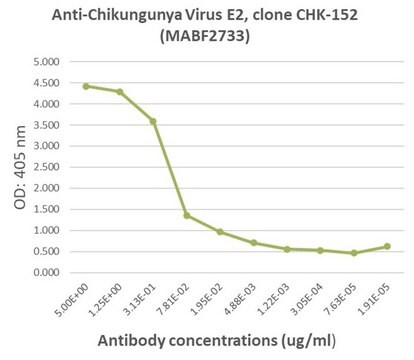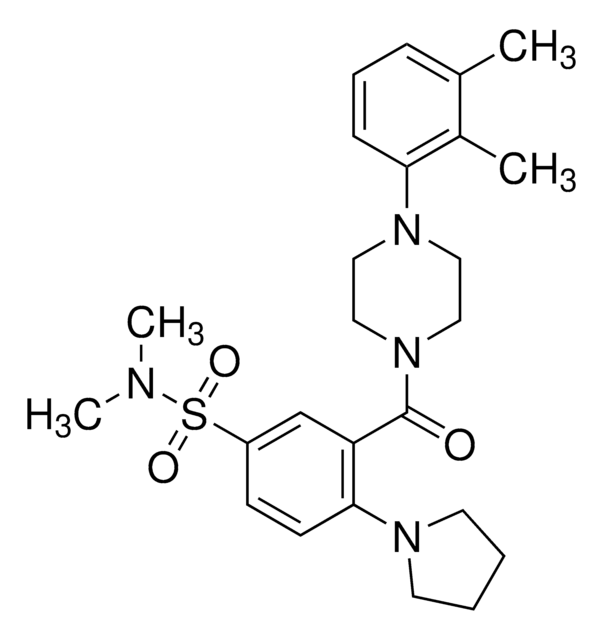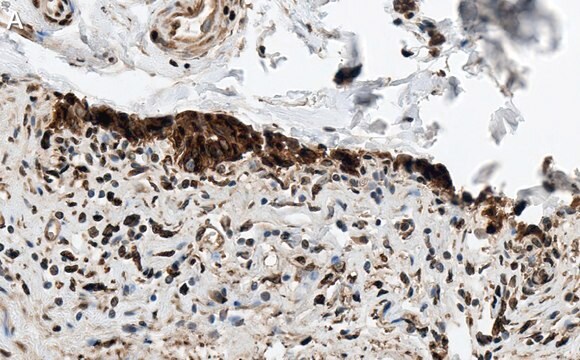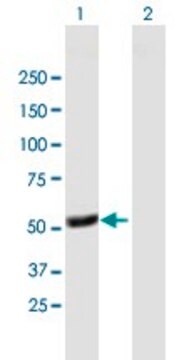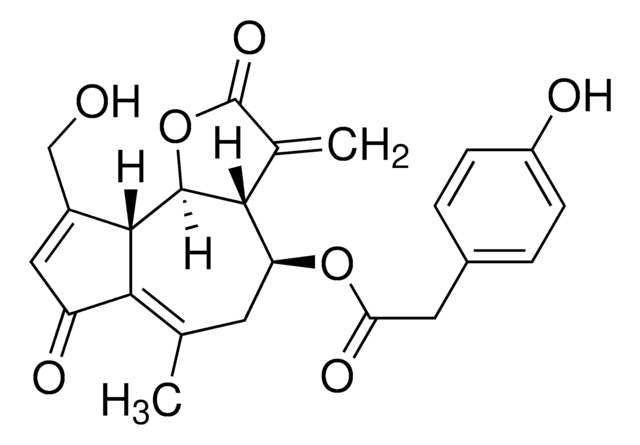MABF3030
Anti-IL-11 Antibody, clone 12-2E-6G
Synonim(y):
Interleukin-11
About This Item
Polecane produkty
pochodzenie biologiczne
rat
Poziom jakości
forma przeciwciała
purified antibody
rodzaj przeciwciała
primary antibodies
klon
12-2E-6G, monoclonal
masa cząsteczkowa
calculated mol wt 21.52 kDa
observed mol wt ~20 kDa
oczyszczone przez
using protein G
reaktywność gatunkowa
mouse
opakowanie
antibody small pack of 100 μL
metody
immunohistochemistry: suitable
western blot: suitable
izotyp
IgG2aκ
sekwencja epitopowa
Unknown
numer dostępu Protein ID
numer dostępu UniProt
temp. przechowywania
2-8°C
docelowa modyfikacja potranslacyjna
unmodified
informacje o genach
mouse ... IL11(16156)
Opis ogólny
Specyficzność
Immunogen
Zastosowanie
Evaluated by Western Blotting in HEK293T cells transiently transfected with murine IL-11.
Western Blotting Analysis (WB): A 1:250 dilution of this antibody detected IL-11 in HEK293T cells transiently transfected with murine IL-11, but not in wild-type HEK293T cells.
Tested Applications
Western Blotting Analysis: A representative lot detected IL-11 in Western Blotting application (Deguchi, Y., et al. (2018). Biochem Biophys Res Commun. 505(2):453-459; Nishina, T., et al. (2021). Nat Commun. 12(1):2281).
Immunohistochemistry Applications: A representative lot detected IL-11 in Immunohistochemistry application (Deguchi, Y., et al. (2018). Biochem Biophys Res Commun. 505(2):453-459; Nishina, T., et al. (2021). Nat Commun. 12(1):2281).
Note: Actual optimal working dilutions must be determined by end user as specimens, and experimental conditions may vary with the end user.
Postać fizyczna
Rekonstytucja
Przechowywanie i stabilność
Inne uwagi
Oświadczenie o zrzeczeniu się odpowiedzialności
Nie możesz znaleźć właściwego produktu?
Wypróbuj nasz Narzędzie selektora produktów.
Kod klasy składowania
12 - Non Combustible Liquids
Klasa zagrożenia wodnego (WGK)
WGK 1
Temperatura zapłonu (°F)
Not applicable
Temperatura zapłonu (°C)
Not applicable
Certyfikaty analizy (CoA)
Poszukaj Certyfikaty analizy (CoA), wpisując numer partii/serii produktów. Numery serii i partii można znaleźć na etykiecie produktu po słowach „seria” lub „partia”.
Masz już ten produkt?
Dokumenty związane z niedawno zakupionymi produktami zostały zamieszczone w Bibliotece dokumentów.
Nasz zespół naukowców ma doświadczenie we wszystkich obszarach badań, w tym w naukach przyrodniczych, materiałoznawstwie, syntezie chemicznej, chromatografii, analityce i wielu innych dziedzinach.
Skontaktuj się z zespołem ds. pomocy technicznej
